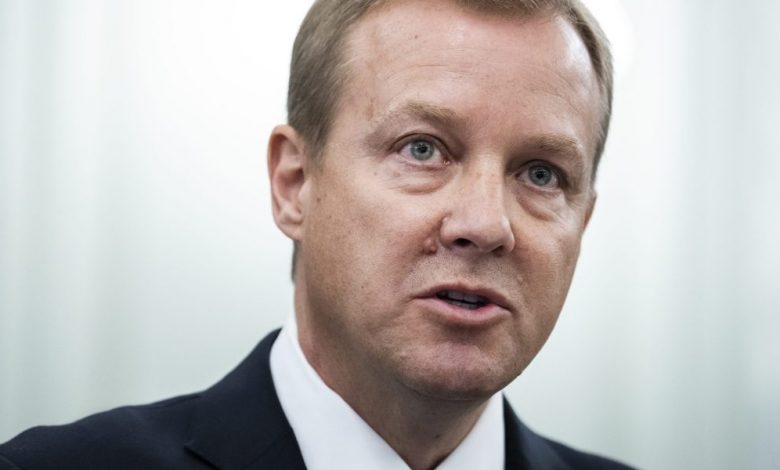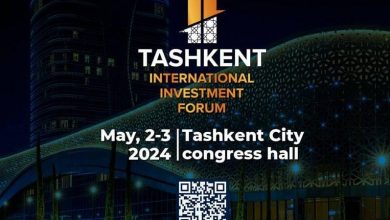The memory chip sector suffers one of its worst defeats ever

This time it should be different.
The memory chip sector, famous for its boom-and-bust cycles, had changed its ways. A combination of more disciplined management and new markets for its products — including 5G technology and cloud services — would ensure companies have more predictable profits.
And yet, less than a year after storage companies made such announcements, the $160 billion industry is suffering one of its worst defeats ever. There is a flood of chips in the warehouses, customers are cutting back on orders and product prices have fallen.
“The chip industry thought suppliers would have more control,” said Avril Wu, senior research vice president at TrendForce. “This downturn proved everyone wrong.”
The unprecedented crisis is not only wiping out the cash of industry leaders SK Hynix Inc. and Micron Technology Inc., but also destabilizing their suppliers, straining Asian economies that rely on technology exports and forcing the few remaining storage players to form alliances or even alliances think about mergers.
It was a swift descent from the industry’s pandemic sales surge, fueled by shoppers outfitting home offices and snapping up computers, tablets and smartphones. Now consumers and businesses are reluctant to make large purchases as they cope with inflation and rising interest rates. The manufacturers of these devices, the main buyers of memory chips, are suddenly stuck with a supply of components and no longer need them.
Already, Samsung Electronics Co. and its competitors are losing money on every chip they produce. Their collective operating losses are expected to hit a record $5 billion this year. Inventories — a key indicator of demand for memory chips — have more than tripled to record levels, reaching three to four months of supply.
Samsung appears to be the only company to emerge relatively unscathed thanks to its strong and diversified business, but even the South Korean giant’s semiconductor division is headed for losses. Investors will get a sense of the damage this week when the company reports quarterly earnings.
The industry is suffering from a unique combination of circumstances — a pandemic hangover, the war in Ukraine, historic inflation, and supply chain disruptions — that have made the slump much worse than a normal cyclical downturn.
Micron, the last remaining US memory chip maker, has reacted aggressively to falling demand. The company said late last month that it would cut its budget for new plants and equipment in addition to reducing production. The speed at which the industrial rights themselves are granted will depend on how quickly the company’s counterparts make similar moves, Chief Executive Officer Sanjay Mehrotra said.
“We have to get through this cycle,” he said. “I believe the trend of cyclical growth and profitability is still ongoing.”
In South Korea, too, Hynix has cut investments and scaled back production. The company’s inventories are in part a result of the acquisition of Intel Corp.’s flash memory business. – a deal that was made before the industry declined.
All eyes are now on memory chip king Samsung, which has said little about the industry’s near-term prospects. The world’s largest maker of chips, smartphones and displays is expected to report fourth-quarter results on Tuesday, followed by a call during which analysts are likely to question its capacity management plans.
The Korean tech giant has typically continued to invest during downturns, hoping to exit with superior production and higher profitability as demand picks up. This time, the market has bet that the company will cut its chip supply and raise its share price in recent weeks.
Lam Research Corp., a maker of chip-making equipment, said last week it was seeing an unprecedented drop in orders as storage customers cut and deferred spending. Executives at the company, which counts Samsung, SK Hynix and Micron among its top customers, declined to predict when such actions could help the memory market recover.
“We’ve seen extraordinary action in the storage market,” said Tim Archer, Lam’s CEO, speaking to investors. “It’s at a level we haven’t seen in 25 years.”
Managing peaks and troughs in demand has always been difficult for memory manufacturers. Bringing new factories online takes years and billions of dollars, so timing is difficult.
The risks have prompted companies in the industry to become more conservative. They’re more focused on profitability than trying to grow fast and gain market share.
That’s especially true for so-called DRAM chips, where the three dominant vendors — Samsung, Hynix and Micron — are reducing supply, said Shin Jinho, co-CEO of Midas International Asset Management. The other big part of the memory market, NAND chips, is more fragmented and will face a tougher battle as its many competitors struggle to survive, he said.
“The NAND market is experiencing fierce competition and the recovery will follow a quarter after the DRAM market recovery,” Shin said. “If the situation lasts longer, we will eventually see consolidation in the NAND market.”
The storage industry has had mergers during previous recessions and this may be no exception. NAND makers Western Digital Corp. and Kioxia Holdings Corp. are making progress on their deal talks, people familiar with the matter said this month. However, the companies already produce together, so a merger will not necessarily lead to production losses.
The longer-term question is when customer demand will recover. China’s recent exit from Covid-related restrictions could be a catalyst to help the industry as gadget makers will be able to get production lines back to normal, said Greg Roh, head of technology research at HMC Investment & Securities.
“There will also be pent-up demand for gadgets,” said Roh. “In our view, the memory will recover in the second half.”
Learn how to navigate and build trust in your organization with The Trust Factor, a weekly newsletter exploring what leaders need to succeed. Sign up here.



